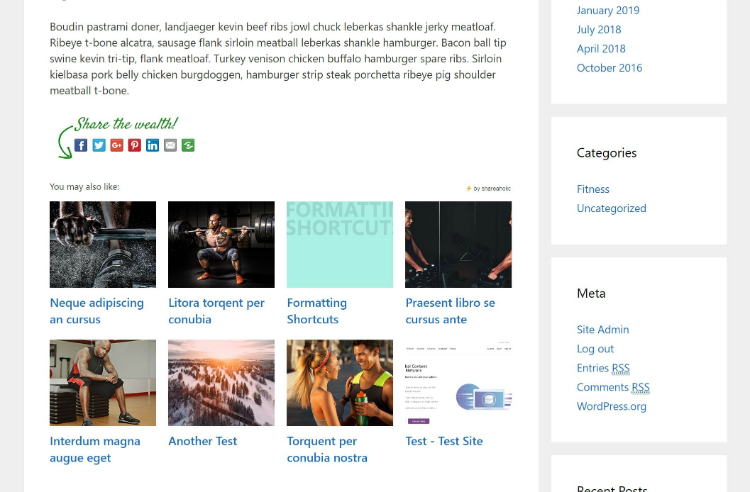Spreading the word about your brand and getting people to visit your website is far from easy, mainly because you have to put in a lot of effort on several different fronts. In order to stand apart from your competitors, which will be many of, regardless of your industry, you need to make sure that you rank higher than them.

This involves doing SEO, producing high-quality content on a regular basis, targeting the most relevant keywords, building backlinks on relevant authority websites, and cultivating an active social media presence in order to engage your audience.
If you can do all that, hopefully, you will be able to drive traffic to your website and get more people to check out your brand, products, and/or services. However, getting them there is not enough, because it takes more than a just few moments for them to become familiar with your business and what you have to offer, which means you have to capture their attention and keep them hanging around on your website for a longer period of time. Today’s audiences’ attention spans are very short, which is why you need to check out our ultimate guide on how to keep your visitors on your website.
1. Make Sure Your Content Is Easily Scannable
For starters, here is some bad news. Your average visitor spends 5.59 second on average looking at website content, which means that they scan the content first, as opposed to reading it. The good news is that there are plenty of things you can do in order to make your content more readable and appealing, which will keep your audience hanging around for much longer.
Make your content more scannable by implementing the following:
- Break up long sentences and paragraphs
- Use eye-catching subheadings
- Use lists and bullet points

According to Jane Howlett, who is a marketer for NinjaEssays, they were able to keep their visitors on their website longer simply by applying all of the above.
2. Optimize Your Website’s Loading Times
Getting your website to load just a second faster can mean the difference between people staying on your website and leaving your website. According to Henry Myles, who works as a web designer for EssaysOntime, there are a number of ways in which you can improve your websites loading times and performance. They include using a CDN, enabling browser caching, decreasing HTTP requests, as well as compressing your content, such as high-quality images. Speed is crucial if your audience is in a hurry. For instance, college students looking for assignment help will leave a website if it’s too slow to load.
3. Simplify Your Site’s Navigation
If it takes more than two or three clicks for a visitor to reach a particular page on your website, then you probably need to work on streamlining your website’s navigation. For instance, if you have a website for your custom essay writing service, you want your visitors to be able to find all the crucial info, such as pricing and delivery times, in just a couple of clicks.

Using a simple navigation menu, breaking up your website into categories, and creating a separate blog section should do the trick. Also, make sure there is a search feature available on the website.
4. Make Your Content More Substantial
There is plenty of research which suggest that lengthier articles, and especially long pillar post of 2,000 words and up, are great for improving user engagement. Part of it has to do with the sheer length of the content, because the more words there are, the longer it will take your audience to read your articles and posts. But there is also more room for you to provide information that is your audience can actually use, such as useful examples, stats, research, and case studies. They especially love detailed guides on any subject. Providing useful and actionable content is what it’s all about.
5. Show Related Content
This is a trick that online stores, such as Amazon, use in order to get you to keep browsing their websites and buy more of their products than you originally intended to. If your audience likes your content, make it easier for them to find it, which is why you should always display related content at the end of every blog post or article. That way, your visitors won’t even have to look for more of your content. All they’ll have to do is click on it.

6. Add a Chat Feature
Adding a chat feature to your website can help your audience feel more at home on your website, knowing that you are there to answer their questions, should they have any. That way, they won’t have to leave your website in order to look for answers and potentially stumbling upon a different site and never coming back.

(Source: IngniteVisibility)
Make sure to add a name and an image to your chat box, so that your visitors know they are talking to an actual human being, and not a bot. But, make sure to let them know during which hours you won’t be available for their inquiries.
7. Build a Responsive Website
Having a responsive website is essential nowadays, for at least two reasons. First, you need to have a responsive site if you want it to rank high, because of Google’s mobile-first indexing. Regardless of how good the desktop version of your website is, if the mobile version is poor, your website will receive a lower ranking. Second, mobile devices have started to dominate the landscape, so in order to provide good user experience, your website needs to read as well on smartphones and tablets as it does on laptops or desktops.

Conclusion
If you decide to implement the tips have shared in this ultimate guide, you will have no trouble keeping your visitors hooked and hungry for more. All it takes a little effort. Good luck!


